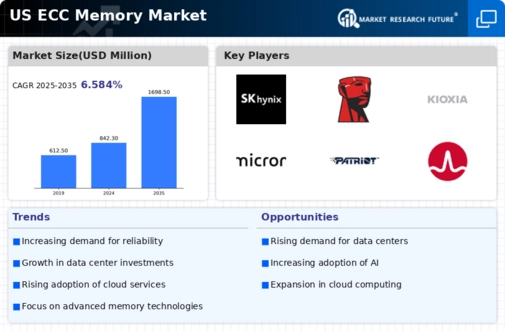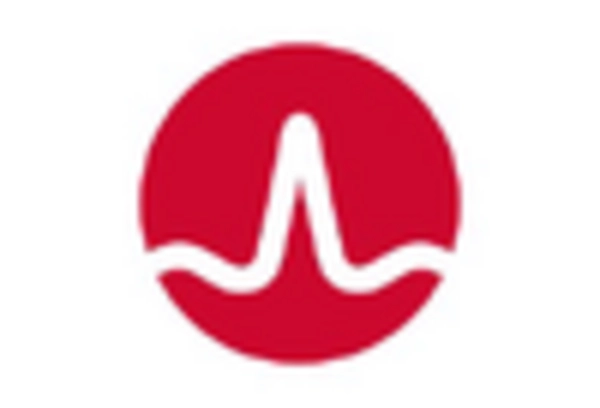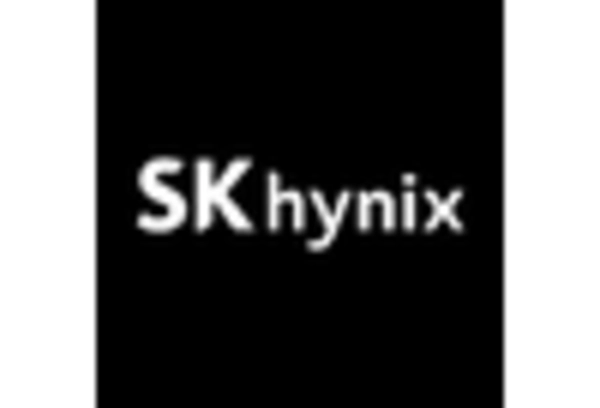Expansion of Data Centers
The rapid expansion of data centers in the US is a significant driver for the ecc memory market. With the increasing volume of data generated daily, data centers require high-performance memory solutions to ensure data integrity and reliability. The US data center market is expected to grow at a CAGR of 5.5% from 2025 to 2030, reaching approximately $100 billion. This growth is likely to spur demand for ecc memory, as it is essential for maintaining system stability and preventing data corruption. The ecc memory market stands to gain from this expansion, as data centers prioritize memory solutions that enhance operational efficiency and reliability.
Growth in IoT Applications
The proliferation of Internet of Things (IoT) devices is significantly impacting the ecc memory market. As more devices connect to the internet, the need for reliable memory solutions that can handle vast amounts of data becomes crucial. The US IoT market is anticipated to reach $1 trillion by 2025, creating a substantial demand for ecc memory to ensure data accuracy and reliability. The ecc memory market is poised to benefit from this growth, as manufacturers develop memory solutions tailored for IoT applications, which often require error correction to maintain performance and reliability.
Regulatory Compliance and Data Security
As data security concerns escalate, regulatory compliance becomes a critical driver for the ecc memory market. Industries such as finance, healthcare, and government are subject to stringent regulations that mandate the use of reliable memory solutions to protect sensitive information. The ecc memory market is likely to see increased demand as organizations strive to meet these compliance requirements. In 2025, the US cybersecurity market is projected to exceed $200 billion, highlighting the importance of secure data handling. Consequently, the adoption of ecc memory is expected to rise as businesses prioritize data integrity and security in their operations.
Rising Demand for High-Performance Computing
The increasing demand for high-performance computing (HPC) across various sectors is a key driver for the ecc memory market. Industries such as scientific research, finance, and engineering rely on HPC for complex simulations and data analysis, necessitating memory solutions that can provide error correction and stability. The US HPC market is projected to grow at a CAGR of 7% from 2025 to 2030, reaching approximately $40 billion. This growth indicates a robust opportunity for the ecc memory market, as organizations seek to enhance their computing capabilities while ensuring data integrity and performance.
Increased Adoption of AI and Machine Learning
The growing integration of artificial intelligence (AI) and machine learning technologies across various sectors is driving the demand for the ecc memory market. These technologies require robust data processing capabilities, which ecc memory provides due to its error-correcting features. As organizations increasingly rely on AI for data analysis and decision-making, the need for reliable memory solutions becomes paramount. In 2025, the market for AI applications is projected to reach $190 billion in the US, indicating a substantial opportunity for ecc memory manufacturers. The ecc memory market is likely to benefit from this trend, as businesses seek to enhance their computational reliability and performance.
















Leave a Comment